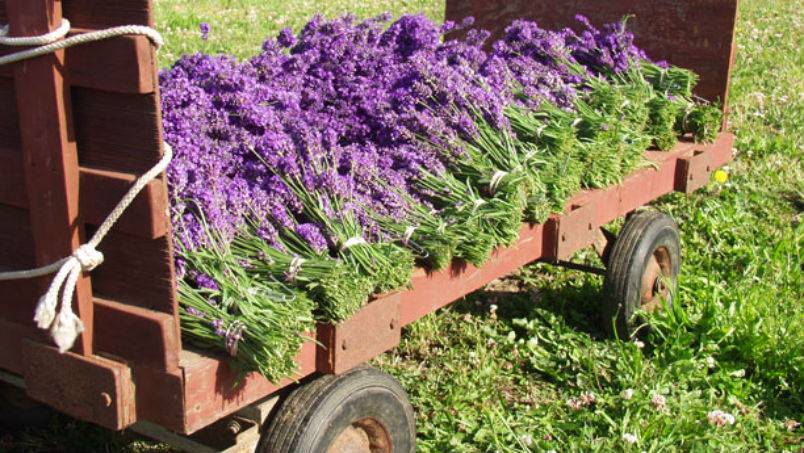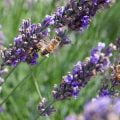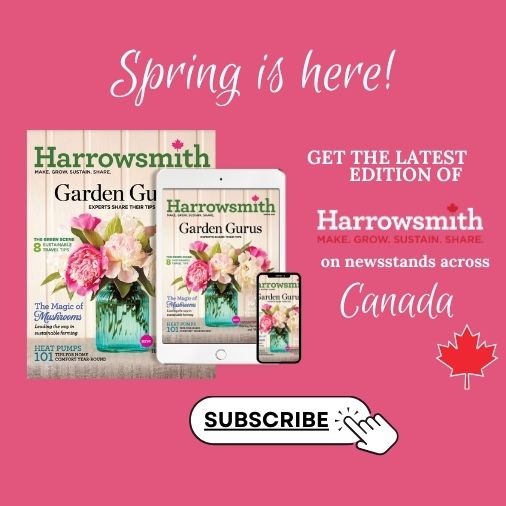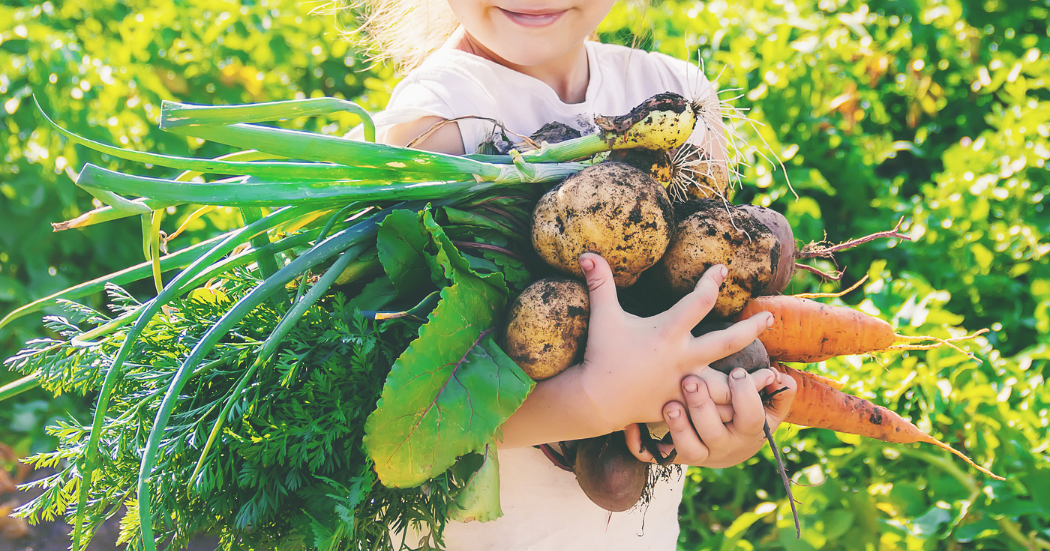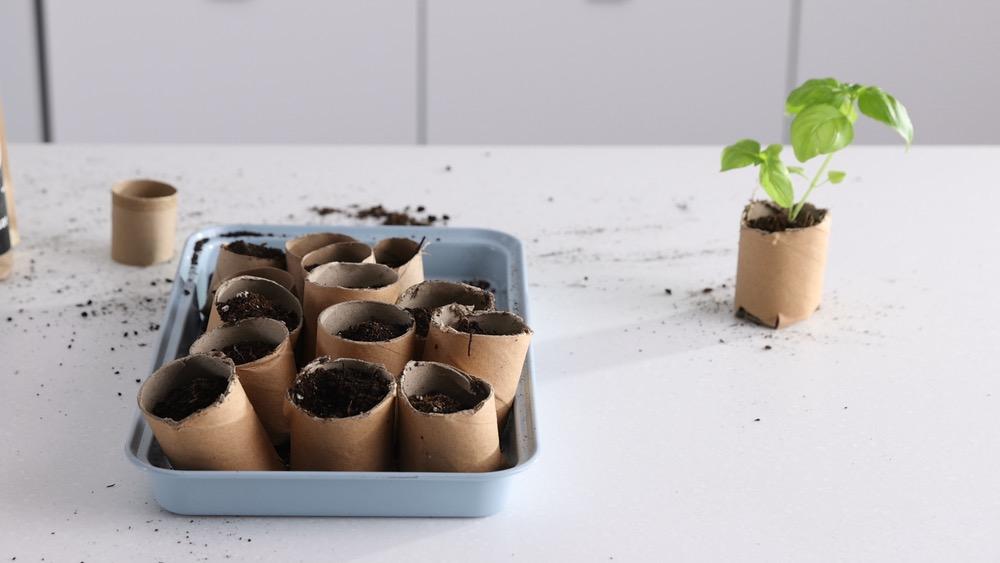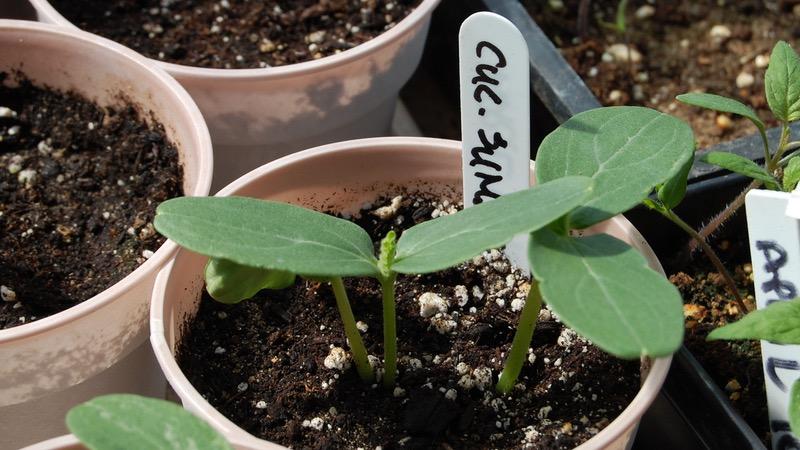Lavender is, in my opinion, the herb of luxury. One marvellous whiff and I’m swirling off to oblivion, eyes rapturously shut. Its fine odour emanates from all parts of the plant, formats delicate purple blossoms to its silvery-green, conifer-like leaves and woody stems. The dry stuff will do in a pinch, but what a treat to see, touch and smell a patch of it in full bloom. Who wouldn’t want to grow their own? Only problem is, lavender is a mite touchy in most of Canada.
The books say that lavender grows only in zones warmer than 5, but you’ll frequently come across a plant tag or a listing in a seed catalogue that brags about Zone 4, or even three. As a Zone 4 gardener, I’ve always been loath to buy lavender seedlings by mail-order, lest they die before they grow big enough to harvest. But experience is the only true teacher, so I ordered 10 different types of lavender and planted them in my garden, to identify the best, hardiest varieties I could grow from seed.
There are 40-plus varieties of this herb growing in favoured climes around the world, but right off, I was limited to the English species, L. angustifolia (also known as L. officinalis and L. vera),which comes in shades of white, pink, violet and blue. The fancier, “winged” Spanish (L. stoechas) and fern-leaf French types (L. dentata) were out, as were other very tender species.
Most types of lavender shown in the seed catalogues are tender (Zone 9 and up) hybrids sold only as small cuttings, or clones of the parent plant. The prices are nothing to be sneezed at. I did order three tiny cuttings which I could not find anywhere else: Richter’s ‘Silver Edge,’ ‘Twickle Purple’ and ‘Blue Cushion.’ But for better value and more abundant results, I decided to go the seed route.
Lavender seeds have a deserved reputation for being difficult to germinate. About a month before your expected last frost, prepare plastic seed starting flats by filling the cells with moist, soilless mix. Chill the seeds for 24 hours in the freezer beforehand, then sprinkle thickly over the prepared cells and press the seeds lightly into the surface—do not cover them with soil. Water well from below, cover the cells tightly with a clear plastic bag, and place them under grow lights at room temperature. Then you wait. Lavender’s germination can be erratic, taking anywhere from ten days to a month.
I started mine in early May, and tiny sprouts began to appear within two or three weeks. Most types had mediocre germination, but one was out of sight. I highly recommend William Dam’s ‘Munstead Apex,’which produced four times as many seedlings as the next-best type, Stokes’ ‘Lavender Lady.’ We’re talking a score of 45 to 12, and all the rest were miles behind, with only one to five tiny sprouts in total. No contest.
As soon as the seedlings were up, I removed them from the plastic bag, thinned them out and let them grow, keeping conditions on the dry side—if there’s anything lavender hates, it’s waterlogged soil. They grew slowly for a few weeks under lights, then were transplanted outdoors in mid- June, once temperatures had stabilized somewhat. I placed them in full sun, without fertilizer, in soil that is gravely and very well drained—a bad spot for monarda is a great place for lavender.
Spaced a foot (30 cm) apart, most of the seedlings were teensy and hard to see in the vastness of the garden, except for the more sizeable plants of ‘Lavender Lady’ and ‘Munstead Apex.’ I marked the spots and hoped for the best.
A month later, Munstead Apex was still outshining the competition. ‘Lavender Lady’ and ‘Yellow’ from Salt Spring Seeds had formed good-size bunches but were still on the small side, while the rest—‘English’ from Florabunda, ‘Hidcote Blue’ from Veseys, ‘Rosea’ from The Cottage Gardener and ‘Munstead’ from Terra Edibles—were downright tiny. By August, ‘Yellow’ had taken the lead, shooting up to knee height. Though ‘Yellow’ was the tallest, ‘Munstead Apex’ was the bushiest. The five others remained ankle height at best.
Nothing flowered in its first year, but this was not surprising for seed-grown plants. (Although I was disappointed that, on my watch, ‘Lavender Lady’ did not live up to its reputation as a first-year bloomer.)
Though lavender doesn’t like mulch (it keeps the root zone too moist), I piled on the composted chicken litter in the fall to protect my plants from winter weather. And what a winter it was, too.We’re no strangers to -40C around here, but it usually comes blanketed by insulating snow. This year, the snow melted just before the mercury dropped in mid-winter, causing many of my woody perennials to croak or severely die back, including a borderline-hardy, five-year-old sage plant and, of course, many of these precious lavender plants. In springtime, I kept hoping the woody stems would show new signs of life, but when the rest started flowering in late June, I had to admit failure and rip out ‘Lavender Lady’ (Z6) and ‘Yellow’ (zone not listed, but hails from Salt Spring Island, so probably quite tender). What a shame.
Surprisingly, some of the punier lavenders survived the harsh winter very well. There was a lovely show of flowers from ‘Munstead’ (Z4) and ‘Hidcote Blue’ (Z4), though the plants were less than one foot (30 cm) tall and wide. ‘English lavender’ (Z5) was taller (1-1/2 feet (45 cm) and bushier in diameter, with long, flexible branches and glaucous leaves with their bluish, silvery glow.
‘Rosea’ (Z5) survived, but did not flower. I suspect it was heavily hit by the winter cold, because its six-inch (15-cm) branches were extremely compact and bushy, with many short side-shoots. It reminded me of a stunted pine growing on an exposed mountainside.
 In the final analysis, there can be only one winner. The star of the show was ‘Munstead Apex.’ It excelled right off the bat, growing into two-and-a-half-foot (75-cm) clumps which produced a magnificent crop of lavender blossoms— a knee-high dome of rich lilac colour and unmistakable scent.
In the final analysis, there can be only one winner. The star of the show was ‘Munstead Apex.’ It excelled right off the bat, growing into two-and-a-half-foot (75-cm) clumps which produced a magnificent crop of lavender blossoms— a knee-high dome of rich lilac colour and unmistakable scent.
All four flowering varieties lasted from late June until late July, when these pictures were shot. After the photo shoot, I gave the plants a good haircut with garden shears, to keep them in trim for next year. The blooms were good for pot-pourri, sachets and teas, but were too spent for display. For that, I had picked some earlier in the season, before a third of the corollas had unfurled from their calyxes. I dried them upside-down, then filled a dry vase with the fragrant stems.
Now lavender’s exhilarating scent, a blend of sweet flower and medicinal herb, wafts through the upstairs bathroom/laundry room. It’s the age-old fragrance of clean, crisp linens, a refreshing, calming note that helps to wash away headaches, insomnia and anxiety.After all, lavender’s Latin name, Lavandula, derives from the verb “to wash” (lavare), and as such, it inspires both spa-like soaks and the tackling of piles of laundry all winter long. Perfect

